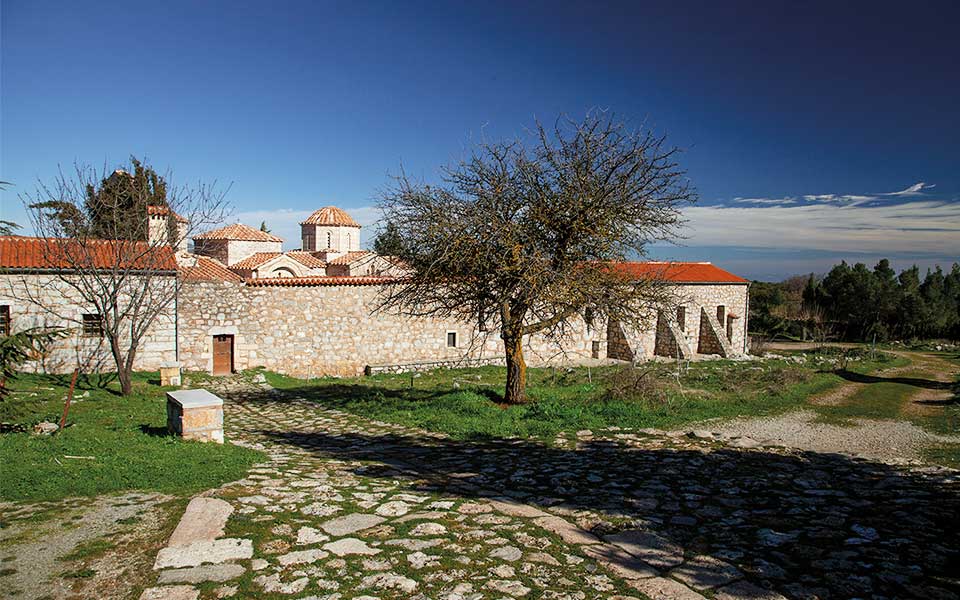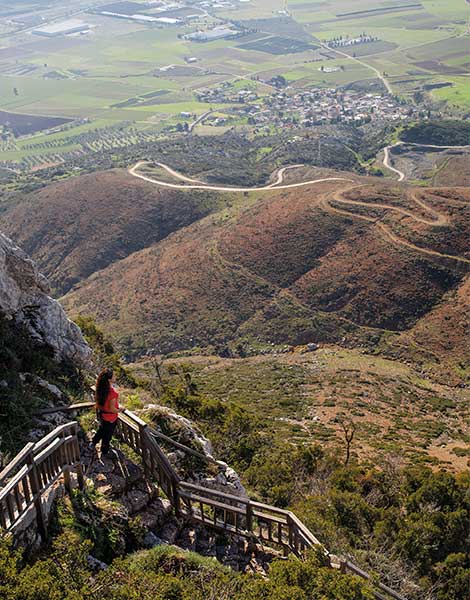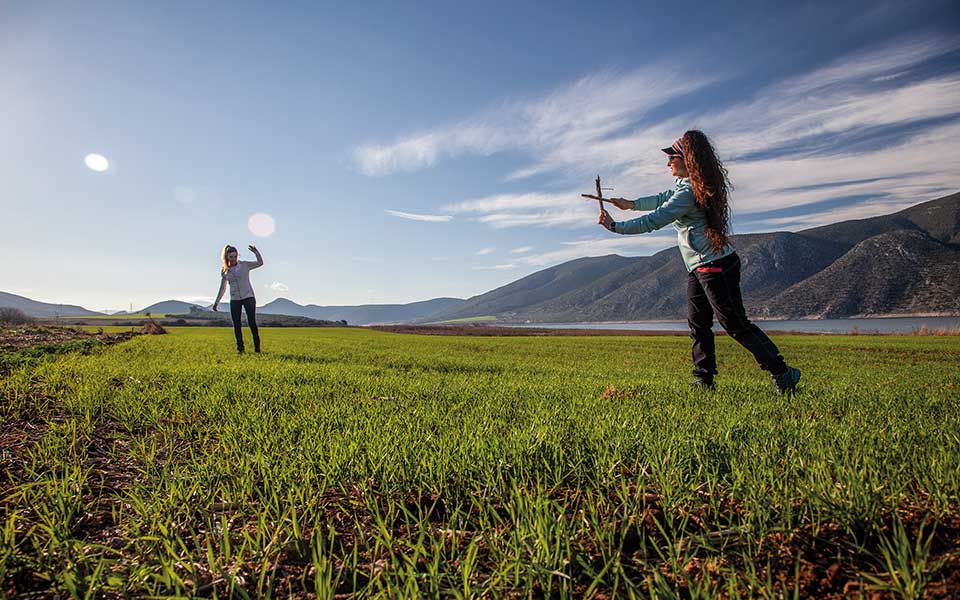Alright, we know in advance that we won’t be encountering a lake like Lake Kerkini or the Lake of Ioannina; expectations aren’t that high. In fact, there are, in general, no expectations. There’s just the bright winter sun, and being in the mood for exploration and discovery. In an age of limitless information, it’s rare not to know in advance what you’ll see when you get to where you’re headed.
The only thing we know today is that we’ve seen Lake Yliki sparkling in the sunlight from the window of the car on the national road on practically every trip we’ve ever taken going north. We also know that, for a while at least, it supplied the city of Athens with water, feeding into Lake Marathon. Ever since Lake Morno and the Evinos River took over, however, Yliki has been something of a backup.

© Olga Charami
We take the old Athens-Thiva national road; it’s a lovely route, well-known to motorcyclists and cyclists. This adds just 10 minutes to our excursion; on the new national road, it takes about an hour to reach the exit to Lake Yliki. It’s all smooth turns, with verdant green scenery alternating with sections of burnt forest and some rather interesting villages that might be worth a brief stop. For instance, the village of Vilia has famous grill houses; Inoi has a tower dating from the 4th century B.C.; and Eleftheres boasts an important fortress from the same era. You could even stop in Thiva, better known in English as Thebes, to admire its interesting ancient landmarks and soak up its classical connections.
Set your GPS for the village of Ipato; it’s a great starting point (and end point, judging by the great grilled meat at the taverna Patikas). Above the village rises Mount Sagmatas, a rare peak in these endless flatlands, with a summit at an elevation of 750 meters. This is where you’ll find Sagmata Monastery, founded in the 12th century on the ruins of an ancient temple dedicated to Zeus. Restored and well kept, the monastery boasts lovely frescoes and mosaic floors, repurposed ancient columns and the relics of the founder, Ossios Klimis. During the winter, it is open to visitors until 13:00. Be sure to visit the new church to admire the views: the valley of Boeotia, Lake Yliki and its inlets, and Paralimni unfolding at your feet. In the distance, you can see snow-capped Mount Parnassus. On your way to the village of Mouriki, you’ll traverse expanses of cultivated fields, some with old warehouses, some ploughed, others abandoned, with the power lines and transmission towers breaking up the otherwise endless flatness around you.

© Olga Charami

© Olga Charami

© Olga Charami
The Lake and Paralimni
Just outside Mouriki there is a crossroads: the road to the left goes to Yliki, the one on right towards Paralimni, and then on to Halkida. The asphalt road to Paralimni goes much farther than the lake and can lead you to Skroponeri, with its large beach and views across to Evia. A number of dirt roads lead to the banks of Paralimni; most are rutted with tire tracks left by agricultural vehicles. With the car windows open, the pleasant scent of celery and garlic wafts in from the fields. You can see broccoli and spring onions growing near the lake, and workers tending the land. I spot some couples taking photographs of the birds flying over the still surface of the lake.
Paralimni is an important wetlands that’s home to many bird species and types of ecotopes, and two of the latter particularly worth mentioning are the forest of waterlilies in the south west, and the waterfalls that form in the canal towards the sea when its waters overflow. Paralimni and Yliki have been incorporated into the Natura 2000 network and, with a little care, the two lakes have the potential to becomea lovely destination for birdwatchers and cyclists, just an hour from the capital.

© Olga Charami

© Olga Charami
20,000 Years Later
You can reach Yliki from the EYDAP pumping station by following the network of dirt roads – all you need is a desire for adventure! You’ll find two classic picnic spots on the left after the pumping station, and then on the left again at the small shrine. Spanning an expanse of 22 square kilometers and with a maximum depth of 40 meters, Yliki receives waters from underground springs, from the local Kifissos River and, via a canal, from the site where Lake Kopais once lay (it was drained in the later half of the 19th century). Nonetheless, its levels are constantly fluctuating.
There are numerous paths branching off in different directions, and the signposting is non-existent, but the images you’ll come away with are beautiful. We didn’t see many birds at this time of year, but we searched for them among reed beds, stomped around in the mud, bought freshly cut spinach, and came across people out fishing and a family that was camping for the weekend. Everything would have been much better without the rubbish that others had left behind, but you could immediately tell you weren’t at a tourist destination, which certainly has its charm.

© Olga Charami
If you have the time and inclination for further discovery, you should also pay a visit to Akraifnio. Take the exit off the highway for this village, and just before you reach town, you’ll find the Cave of Sarakenos, the most important of the countless caves in the area. Animal and human bones have been found here, as well as tools, figurines, pottery, cooking utensils, and seeds. It is estimated that this area has been inhabited by humans since the Late Stone Age, over 20,000 years ago. Several steps and a steep path lead to the entrance, but it is not yet officially open to visitors.
In the village of Akraifnio, you’ll find the Church of Aghios Georgios with its fine architecture and bell tower, its remarkable frescoes spanning centuries and three distinct schools of art, and an inscription by the Frankish leader Antonio de Flama, who built the church in 1311 in gratitude to God for saving him during the great battle which took place in March of that year against the Catalans in Kopais.

© Olga Charami
The metal village
Located just a 10-minute walk from the church are the ruins of the acropolis of Akraifnia – its walls and gate. The views towards the village, the valley and Lake Yliki are simply wonderful. On the far side of the village from the acropolis, you’ll come across an ancient monument to Apollo in the fields, and alongside the road headed to Aghias Pelagias Monastery, the ruins of a sanctuary and oracle dedicated to that god. From here, you can head down to Skroponeri; alternatively, towards the north lies village of Kokkino, followed by Neo Kokkino (or Agios Ioannis, as it’s also known), the settlement built by Larko, the mining and metallurgical compnay specialising in ferro-nickel production, for the workers employed in the mines. The mines are located on the slopes above, and the ore processing facilities in the Bay of Larymna, further north.
The picturesque settlement of Neo Kokkino, with impeccable city planning, is built from concrete, stone and tin, and everything seems to have acquired a reddish hue. Partially abandoned now, you can see old buildings, a medical center, pharmacy, coffee shop, administrative offices and a few local residents staring back at you with great curiosity – after all, how many visitors actually make it this far?












